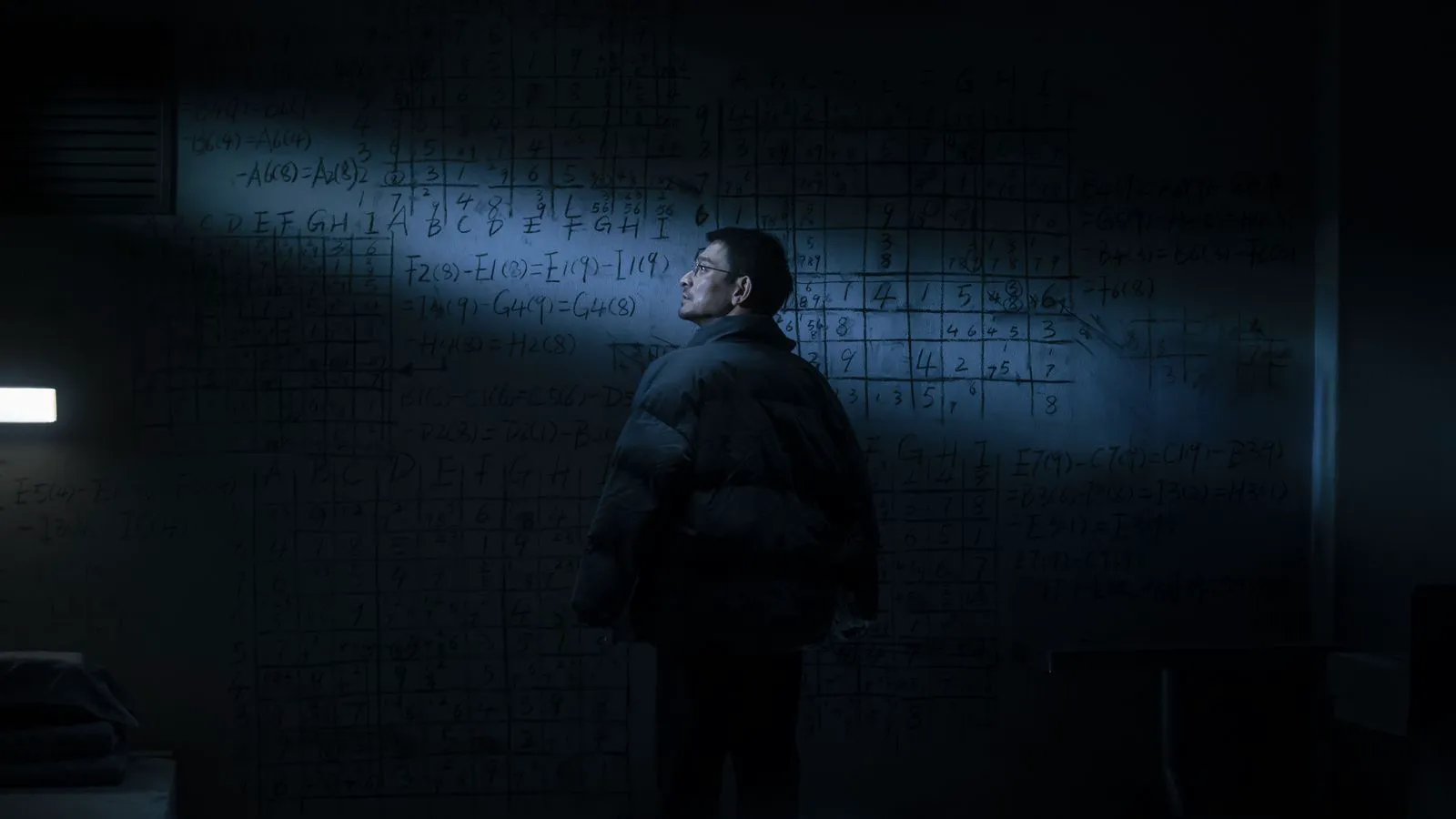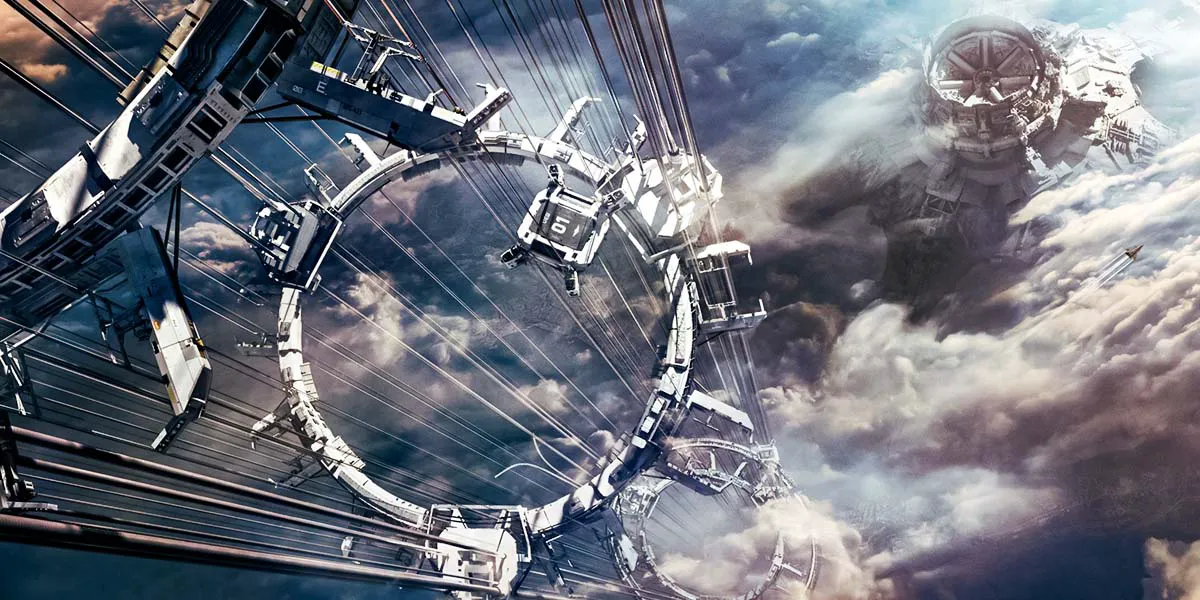The 2019 sci-fi thriller about Earth escaping the Solar System, “The Wandering Earth,” caused a sensation in pre-pandemic theaters, surpassing even “Avengers: Endgame” in domestic box office earnings. With a modest budget by Western standards, “The Wandering Earth” earned tenfold its investment. Coupled with excellent reviews, this paved the way for plans for a full-fledged franchise.
It’s worth clarifying that “The Wandering Earth 2” (although chronologically the second film in the series) is a complete prequel, launching the entire story. The events unfold over 40 years before the first film. Earthlings have already determined that in 100 years, the Sun will turn into a red giant and engulf their home. Somehow overcoming local conflicts, humanity unites for a common cause: building 10,000 ion engines to move the planet from its orbit and tow it away from the dying Solar System to a new parking spot in Alpha Centauri.

Still from “The Wandering Earth 2”
The Looming Threat
During this global construction project, the United Earth Government (UEG) faces two major problems: terrorists who oppose moving the planet and support the long-abandoned digital life program (transferring human consciousness into a digital environment), and the Moon. While the former are dealt with using traditional methods, the Moon problem requires a more creative approach. Otherwise, when Earth begins to move, the gravitational forces of the satellite will simply tear the planet apart. Giant engines are also being built on the Moon, and under the supervision of artificial intelligence, it is sent away to safety.
Key Players in a Global Crisis
Oversight of all global processes is assigned to Chinese officials: the wise representative of the country in the UEG, Zhou Zhechi (Li Xuejian), the young but brave trainee pilot Liu Peiqiang (Jackie Wu), and the artificial intelligence specialist Tu Hengyu (Andy Lau). Each of these characters will play a crucial role in the overall story during numerous moments of crisis, while also facing personal dramas. Liu Peiqiang will meet the love of his life, Tu Hengyu will not give up trying to extend the digital existence of his daughter who died in a car accident, and the immense international pressure will confine Zhou Zhechi to a wheelchair.

Still from “The Wandering Earth 2”
Source Material and Themes
The plot of “The Wandering Earth 2,” like the previous film, is based on a novella by Liu Cixin, a luminary of modern Chinese science fiction. The writer’s books have been resonating around the world for over 20 years, although he himself considers the incredible success a fluke. Almost all of Liu Cixin’s work revolves around the theme of national unity in the face of a global problem, whether it be aliens or a raging Sun, and the individual stories of the characters are brought into orbit of commitment to common goals. Liu Cixin’s books have been in unprecedented demand among filmmakers in recent years: at least three novels will be adapted for the screen in the near future. And from a small novella, the creators of “The Wandering Earth” have built a megalomaniacal epic of three films so far (the third part is officially in development).
Scale and Spectacle
“Colossal,” “gigantic,” “titanic” are the most fitting epithets to describe “The Wandering Earth 2.” Everything here works on a grand scale. Megastructures of ion engines constantly flash in the frame, against which the China Zun skyscraper looks like a matchstick. A string of a space elevator stretches from the surface of the planet into the blackness of space, delivering cargo and astronauts to the local analogue of the ISS, which, of course, is dozens of times larger than the ISS. The camera constantly soars to the stars, showing grains of sand of Earth and the Moon against the background of the huge, evil Sun. Even the fates of the main characters are insignificant drops in the ocean of the Common Cause and the World Design, only emphasizing the globality of the events taking place.
Overwhelming Scale
The film’s problems lie in the same area. The constantly pressing scale at some point begins to work against itself. The layered cake of constant problems that the characters have to heroically cope with quickly gives off a cloying boredom. The abundance of graphics (very decent, I must admit, hello, Marvel) is initially impressive, but closer to the finale, the eyes get tired of the flickering of particles and planets flying towards each other. Due to the length of the story (after all, 40 years is a solid period) and geography (the action jumps from Earth to the Moon, the ISS, and back), the viewer will be accompanied by titles throughout the film: “3 years before the launch of the engines,” “15 minutes before the incident with the stopping of the Moon,” and so on. Text explanations deprive the viewer of the element of surprise: we know in advance that the crisis will be prevented, and how the characters are going to cope with the disaster, they literally explain before the direct action.
A Sterile Victory
It feels like you are watching a pseudo-documentary on the History channel, only with a Hollywood budget and pompous speeches instead of a voice-over. At the same time, the pathos of “The Wandering Earth 2” does not look alien, as in the works of Emmerich or Bay. The characters really believe that they are doing a great thing, and do not forget to remind the viewer even in the face of Armageddon that all this is for future generations.

Still from “The Wandering Earth 2”
Themes of Succession and Sacrifice
With the themes of continuity and the need to give way to the young, “The Wandering Earth 2” is similar to the recent sequel of another megalomaniacal blockbuster, “Avatar: The Way of Water.” Both there and here, we are sold the idea of universal unification in the face of an external threat and the importance of saving the younger generation in the event of a crisis: who else but them will then restore what the old people have broken? The difference is that James Cameron’s New Age eco-project stops where “The Wandering Earth 2” only begins to gain momentum, which again brings us back to the scale of the picture. The death of hundreds of thousands is put on the line for the survival of all mankind, and the film does not answer the question of where the point of no return is, when sacrifice for the sake of good turns into genocide.
The Sequel Syndrome
In the dry residue, we can diagnose “The Wandering Earth 2” with “sequel syndrome.” Everything has become even bigger, more beautiful, more pompous, and more powerful, but in the process of the enlargement operation, the soul was lost somewhere. It is as if the advanced artificial intelligence MOSS broke into the reality of “The Wandering Earth” to personally work on the next film. As a result, the story of the victory of mankind gives off an inhuman sterility.